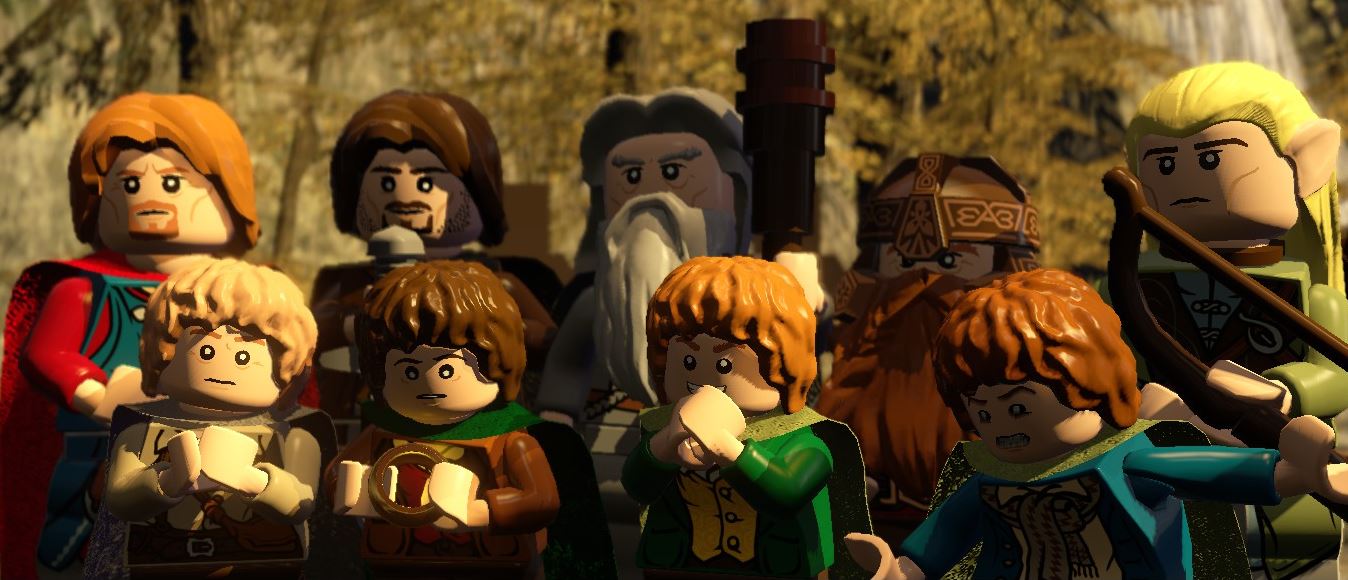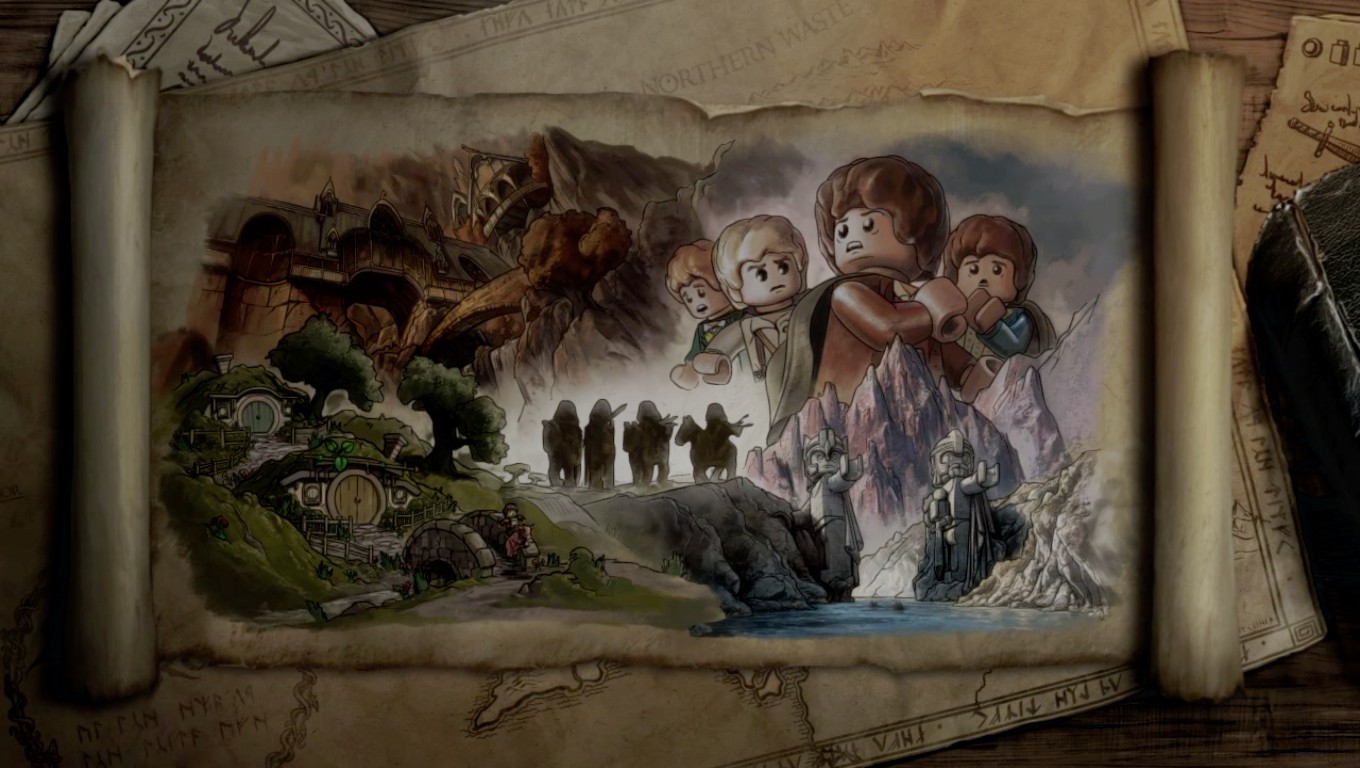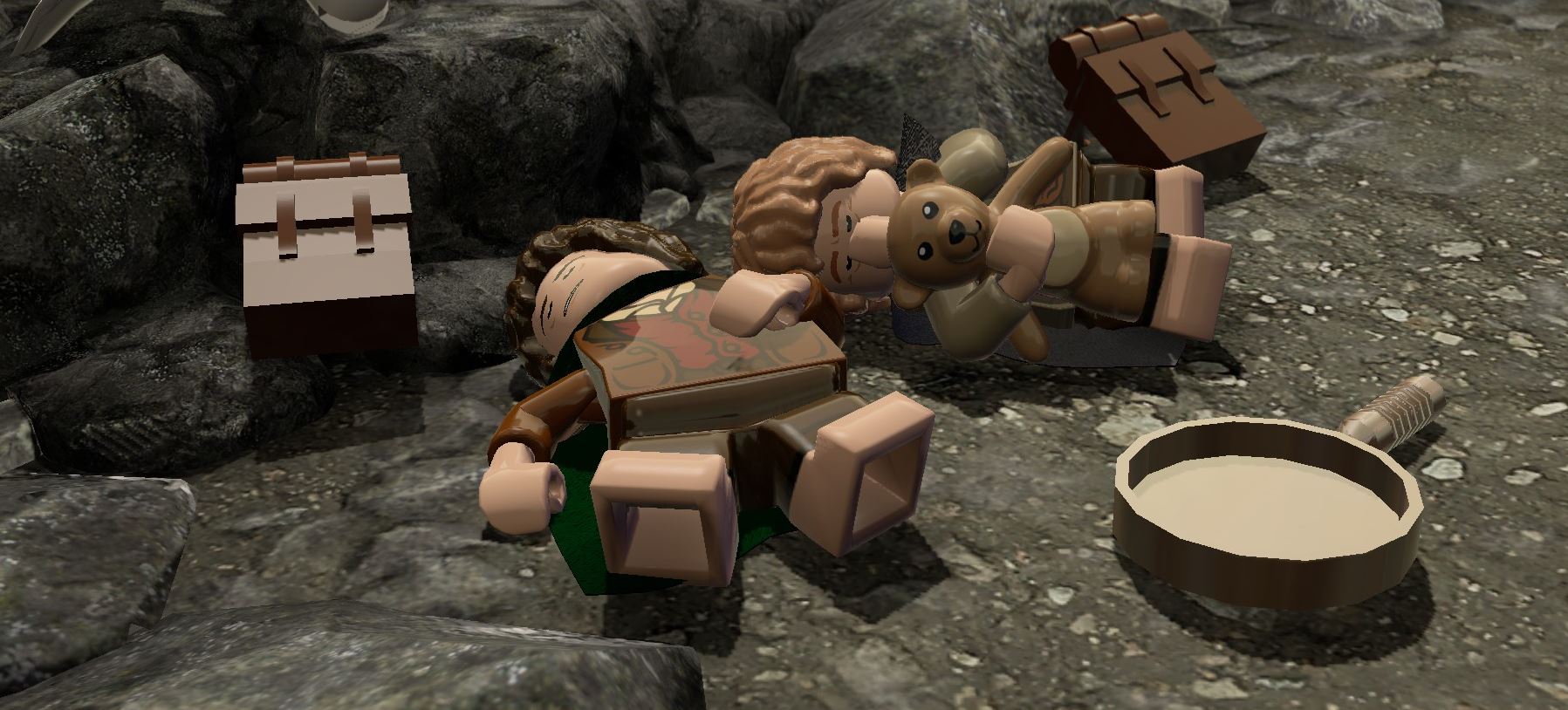Lego Lord of the Rings, the open world where you could simply walk into Mordor
Now that's what I'm Tolkien about.

The Lego games cop a lot of flak for being formulaic, and sure, sometimes they're repetitive. You smash rubble so you can hold down a button to reshape it into a ladder to the next area, where you fight three dudes then start looking for more smashable rubble. But the games built around that loop have evolved over the years, and sometimes one will come along and push the whole series of licensed-properties-as-digital-plastic-bricks forward.
LEGO® The Lord of the Rings™, to give it the full and proper name I'll never use again, was one of those.
It was the first in the series to use dialogue from the source material, for one thing. While the earliest Lego games were silent pantomimes, which suited the Star Wars prequels' "look out, Count Dooku's behind you!" plotting perfectly, retelling the stories of Indiana Jones and Harry Potter in mime was more confusing. (Lego Batman 2 had voice acting first, and Clancy Brown's a great Lex Luthor, but that was an original story rather than an affectionate parody of movies like most of the others.)
Lego Lord of the Rings takes dialogue straight from the original films, abridged for cutscenes and accompanied by sight gags for kids. When the writing on the One Ring is revealed it's because Frodo drops it in a hot cup of tea, and when the Black Gates of Mordor open, it's because the orcs are having pizza delivered. Even Boromir's death scene gets gags, as he's shot not just with arrows but also a broom and a banana.
The other big new thing Lord of the Rings introduced to the series was a full-sized open world. Traditionally you'd get a hub between levels, somewhere like Mos Eisley cantina or Diagon Alley, and in Lego Batman 2 an entire miniaturized Gotham. Lego Lord of the Rings plonked its levels down across a map of Middle-earth. Between levels you can poke around it, and after you've finished story mode the whole thing's unlocked, complete with sidequests and puzzles and minigames.
This Middle-earth feels like it's been reconstructed on a bedroom floor.
This was 2012, before we got sick of maps full of icons, but even today it remains a nice open world to journey across, with plenty of color and incident. Wander up to the right river bend and you can take control of a tiny sailing ship and blow apart pirates with your cannon. In the Shire you can race on a pig, and out behind Bree there are skeletons waiting to be assembled so they can burst into dance. Sure, there are dopey jumping puzzles and other bits of filler, but at least there aren't 50 towers to climb or smuggler's caches hidden in every stretch of water.
Part of the reason it doesn't get boring is that the scale's perfect. The road goes ever on and on, but all you have to do is walk round the corner to arrive at another iconic place. You stand in Osgiliath and in one direction see the White City of Minas Tirith, then look over your shoulder and see Minas Morgul, home of the Nazgul.
The biggest gaming news, reviews and hardware deals
Keep up to date with the most important stories and the best deals, as picked by the PC Gamer team.
This Middle-earth feels like it's been reconstructed on a bedroom floor, an open-world that's manageably sized because it's designed for children rather than unemployed adults—surely the only human beings with enough spare time to 100% any modern RPG.
It's always a short walk from a swamp where it's perpetually raining to a mountain pass or an elven forest, with Howard Shore's score from the movies hopping from theme to theme as appropriate to each location. Not only can you simply walk into Mordor, you get an achievement for doing so. I took Boromir there, strolled through The Black Gate (still open for pizza delivery), and then found a mission to kill 20 orcs within a time limit so I could unlock a shiny mithril Lego brick. It's not Middle-earth as Tolkien intended, or even Peter Jackson, but it's endearing in its own way.

Oh, one more thing to praise Lego Lord of the Rings for—it understood Sam was the best hobbit. Each Lego hobbit has one puzzle-solving ability to make it worth switching to them mid-level—Pippin puts out fires, Merry goes fishing, Frodo's phial lights up dark places—but Sam can not only grow plants to make platforms, but also start fires, hook his elven rope up to grappling points, and cook food. That last one may not seem super useful, until you need to fry up a meal for a hungry ghost in exchange for its treasure.
Even in Lego form the hard-working gardener is quietly the most valuable hobbit. The cutscenes play this as a joke but it shows an understanding of the source material that's stronger than most videogame adaptations of Middle-earth, Lego or otherwise.


Jody's first computer was a Commodore 64, so he remembers having to use a code wheel to play Pool of Radiance. A former music journalist who interviewed everyone from Giorgio Moroder to Trent Reznor, Jody also co-hosted Australia's first radio show about videogames, Zed Games. He's written for Rock Paper Shotgun, The Big Issue, GamesRadar, Zam, Glixel, Five Out of Ten Magazine, and Playboy.com, whose cheques with the bunny logo made for fun conversations at the bank. Jody's first article for PC Gamer was about the audio of Alien Isolation, published in 2015, and since then he's written about why Silent Hill belongs on PC, why Recettear: An Item Shop's Tale is the best fantasy shopkeeper tycoon game, and how weird Lost Ark can get. Jody edited PC Gamer Indie from 2017 to 2018, and he eventually lived up to his promise to play every Warhammer videogame.

